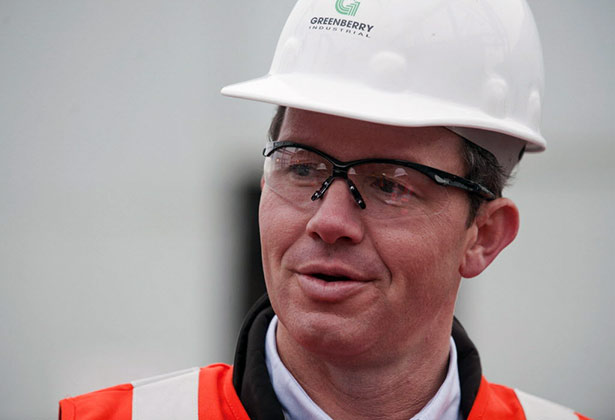2015 CEOs Who "Get It"
The National Safety Council recognizes nine leaders who demonstrate a personal commitment to worker safety and health

 |
Jason Pond
President and CEO
Greenberry Industrial
 |
|
Accomplishments
GREENBERRY is an industrial constructor and fabricator based in Vancouver, WA. The organization currently employs 250 workers. |
Why is safety a core value at your organization?
For Greenberry, it was about the ability to be in business. Our customers have high expectations in regard to safety. If you don’t meet or exceed them, you don’t have a job.
Describe your journey to becoming a CEO who understands the importance of worker safety. What experiences or lessons brought you to where you are now?
I have been around the construction industry most of my life, and I have seen tremendous improvement in safety in that time. I still shake my head at some of the accepted work practices from the 1980’s and earlier. That being said, there was one particular customer sales call I went on that really had an impact on me. It was after the recession hit, and there was no work available in our market. I traveled to Texas to meet with a very large oil company that did have plenty of work. The meeting started with them asking for our safety statistics. When I told them what they were, they said the meeting was over, as we could not work for them. I asked them to take some time to tell us what they would recommend to do, as we had come a long way. They took the next hour to do that. It hurt really bad, but we made a choice that day to make it happen.
What is the biggest obstacle to safety at your organization, and how do you work to overcome it?
I think changing attitudes with key leaders, and holding them accountable to make safety No.1. The best thing I did was start having a mandatory safety conference call every Friday, no matter what. All our sites’ leadership participates. The positive peer pressure it creates is significant. We work hard at making these meetings positive, and to raise awareness of issues that happen. Sharing current lessons learned can prevent someone else from making the same mistake that could get someone hurt.
How do you instill a sense of safety in employees on an ongoing basis?
We use a behavior-based safety program, and focus on pre-task planning at the individual level. We keep our training up to date, and we have daily safety meetings at all sites.
How does your organization measure safety? What are the leading indicators that show you how safe your organization is, and where do you see room for improvement?
We measure safety-related near misses, incidents, first aids, recordable injuries, and lost-time injuries. Leading indicators are the near misses, incidents and first aids. We also take timely and complete safety incident reporting very seriously.
What advice would you offer to other leaders whose organizations are at an earlier stage of the journey to safety excellence?
Get your key people in a room, and get complete buy-in. Then, it is all about follow-up, training and accountability. Above all, if you don’t buy in, they won’t either.
What advice would you offer to a safety professional whose CEO doesn’t “get it”? How can safety pros secure buy-in from the C-suite?
I would ask to sit down with him or her, and bring tangible data to support you. I would also ask to see if you can meet with your liability insurance broker and workman’s compensation broker. I am sure they can show financial benefits and risk management benefits as well.
Post a comment to this article
Safety+Health welcomes comments that promote respectful dialogue. Please stay on topic. Comments that contain personal attacks, profanity or abusive language – or those aggressively promoting products or services – will be removed. We reserve the right to determine which comments violate our comment policy. (Anonymous comments are welcome; merely skip the “name” field in the comment box. An email address is required but will not be included with your comment.)

